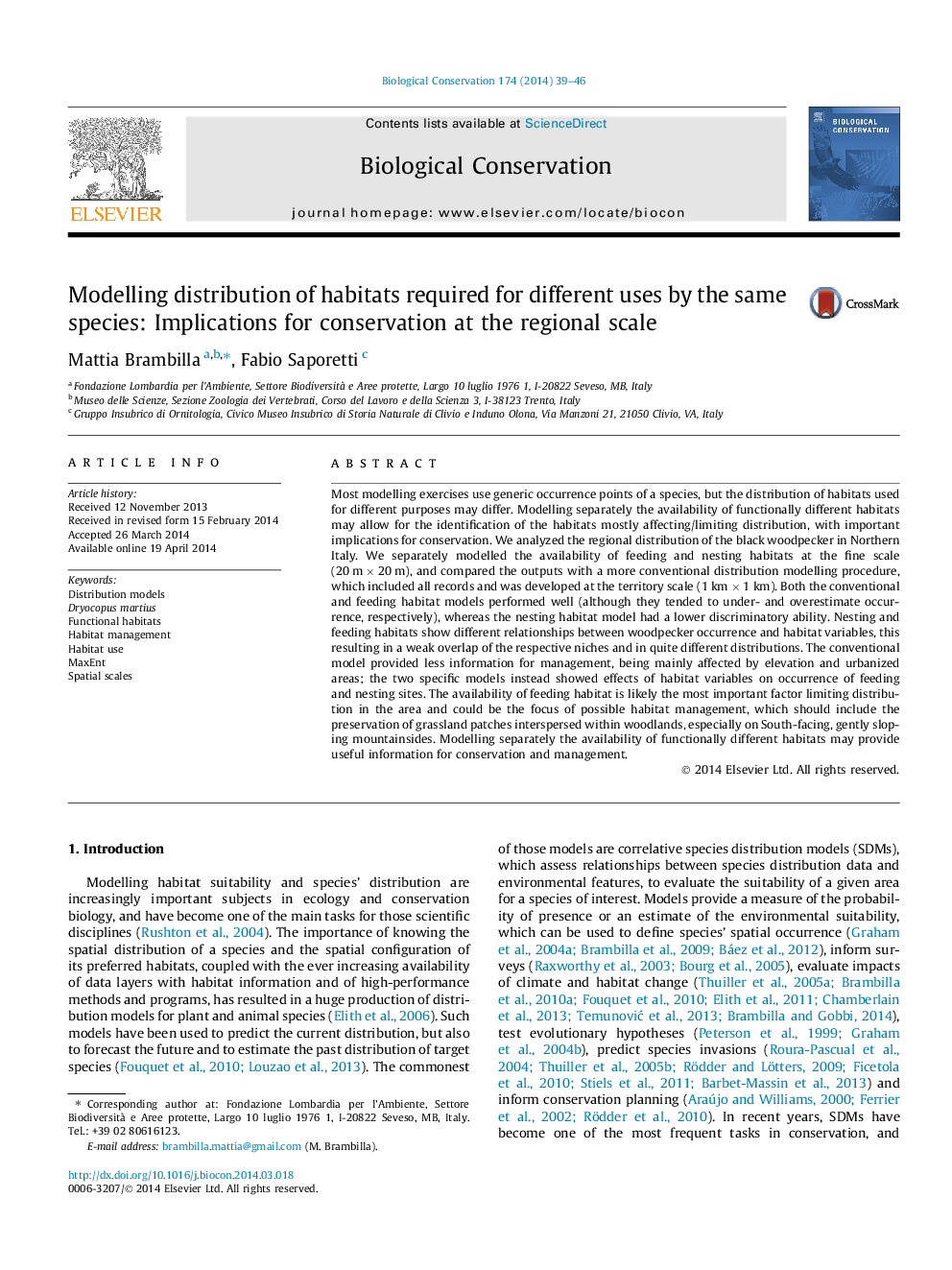| کد مقاله | کد نشریه | سال انتشار | مقاله انگلیسی | نسخه تمام متن |
|---|---|---|---|---|
| 6300252 | 1617927 | 2014 | 8 صفحه PDF | دانلود رایگان |
- Species distribution may depend on availability of functionally different habitats.
- We model black woodpecker distribution considering feeding and nesting habitats.
- Feeding and nesting habitats show different pattern of occurrence and availability.
- Feeding habitat is the main limiting factors for the species in the area.
- Habitat management for conservation should focus on feeding habitat.
Most modelling exercises use generic occurrence points of a species, but the distribution of habitats used for different purposes may differ. Modelling separately the availability of functionally different habitats may allow for the identification of the habitats mostly affecting/limiting distribution, with important implications for conservation. We analyzed the regional distribution of the black woodpecker in Northern Italy. We separately modelled the availability of feeding and nesting habitats at the fine scale (20 m Ã 20 m), and compared the outputs with a more conventional distribution modelling procedure, which included all records and was developed at the territory scale (1 km Ã 1 km). Both the conventional and feeding habitat models performed well (although they tended to under- and overestimate occurrence, respectively), whereas the nesting habitat model had a lower discriminatory ability. Nesting and feeding habitats show different relationships between woodpecker occurrence and habitat variables, this resulting in a weak overlap of the respective niches and in quite different distributions. The conventional model provided less information for management, being mainly affected by elevation and urbanized areas; the two specific models instead showed effects of habitat variables on occurrence of feeding and nesting sites. The availability of feeding habitat is likely the most important factor limiting distribution in the area and could be the focus of possible habitat management, which should include the preservation of grassland patches interspersed within woodlands, especially on South-facing, gently sloping mountainsides. Modelling separately the availability of functionally different habitats may provide useful information for conservation and management.
Journal: Biological Conservation - Volume 174, June 2014, Pages 39-46
